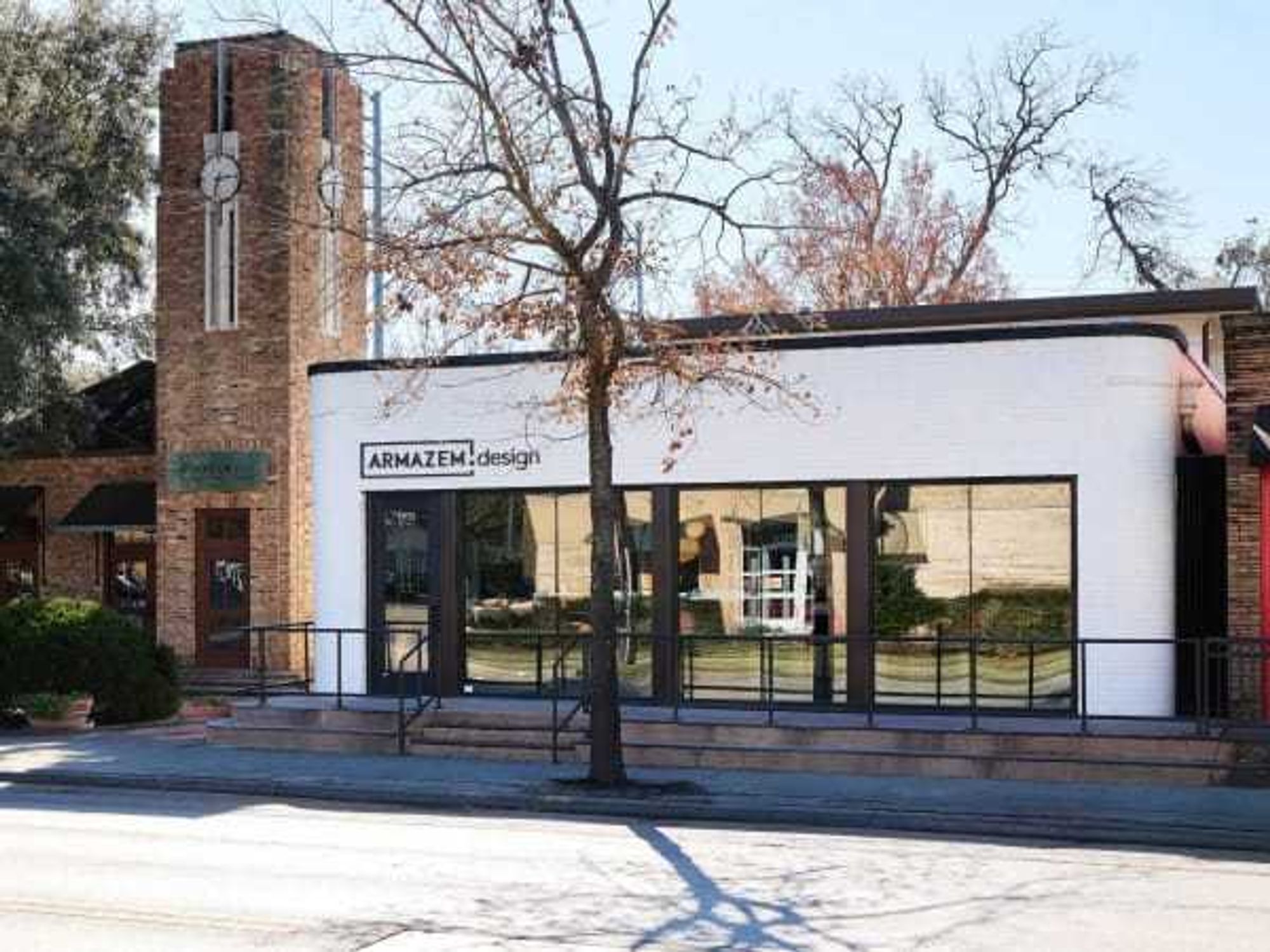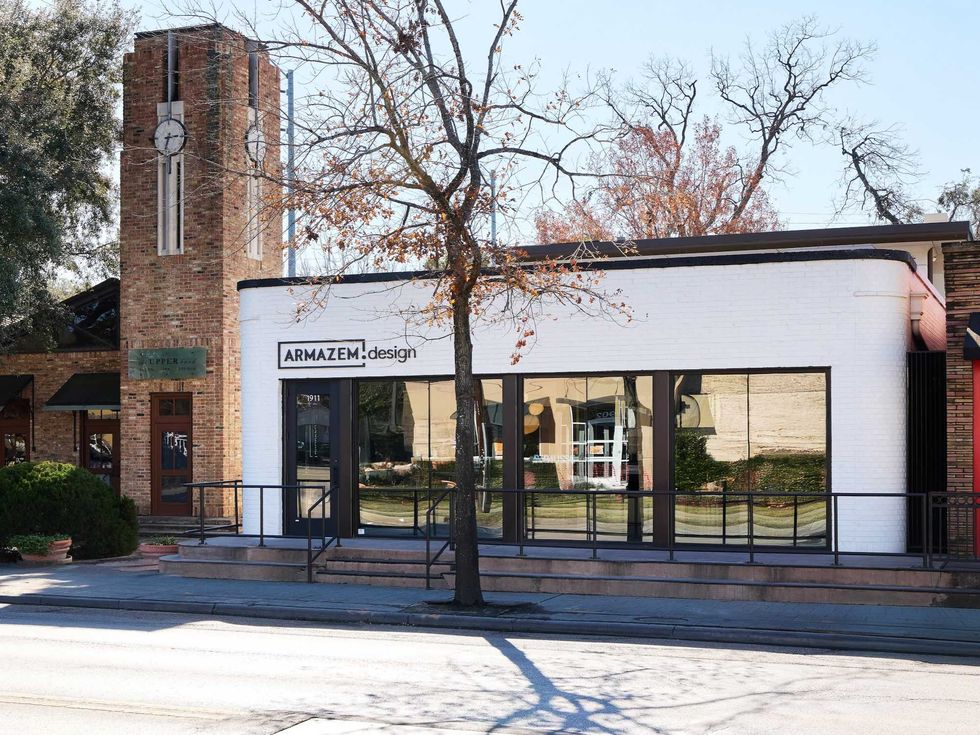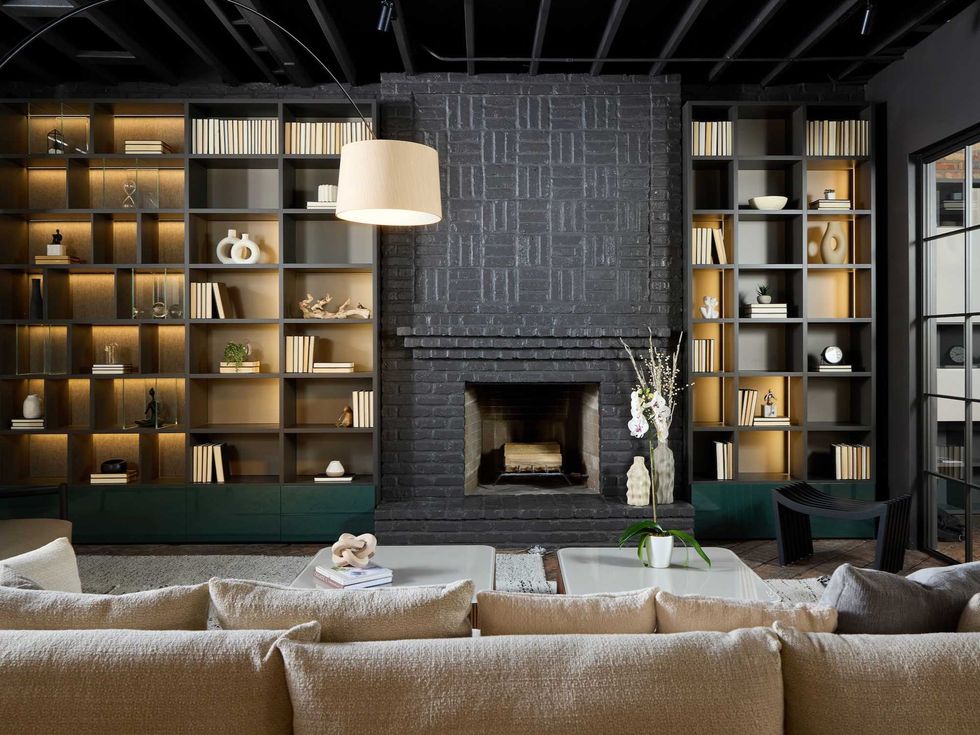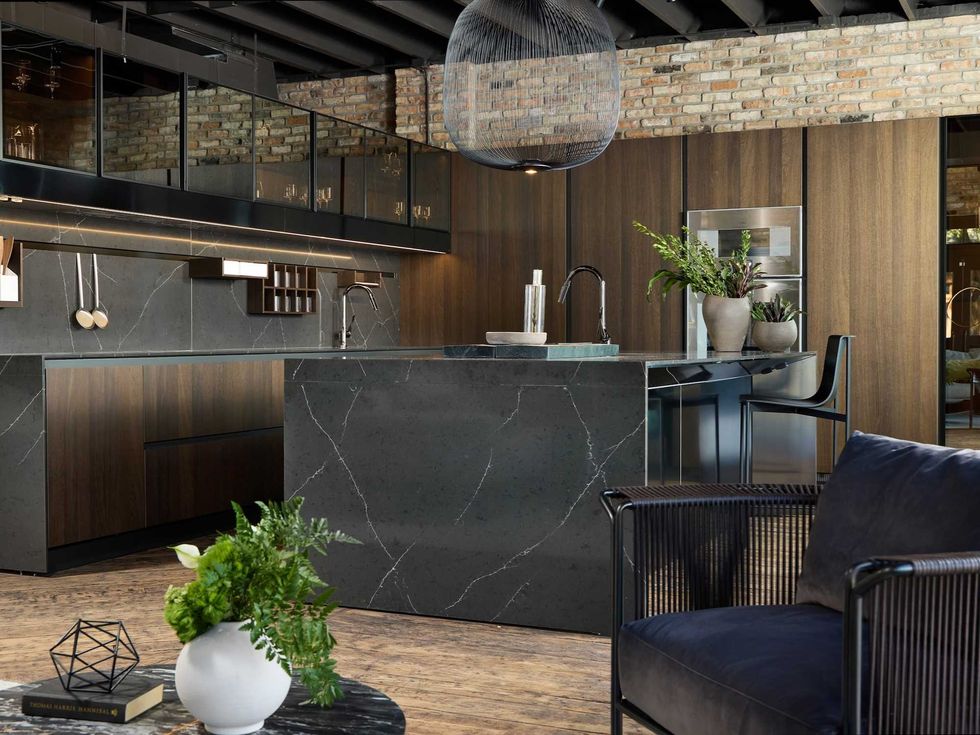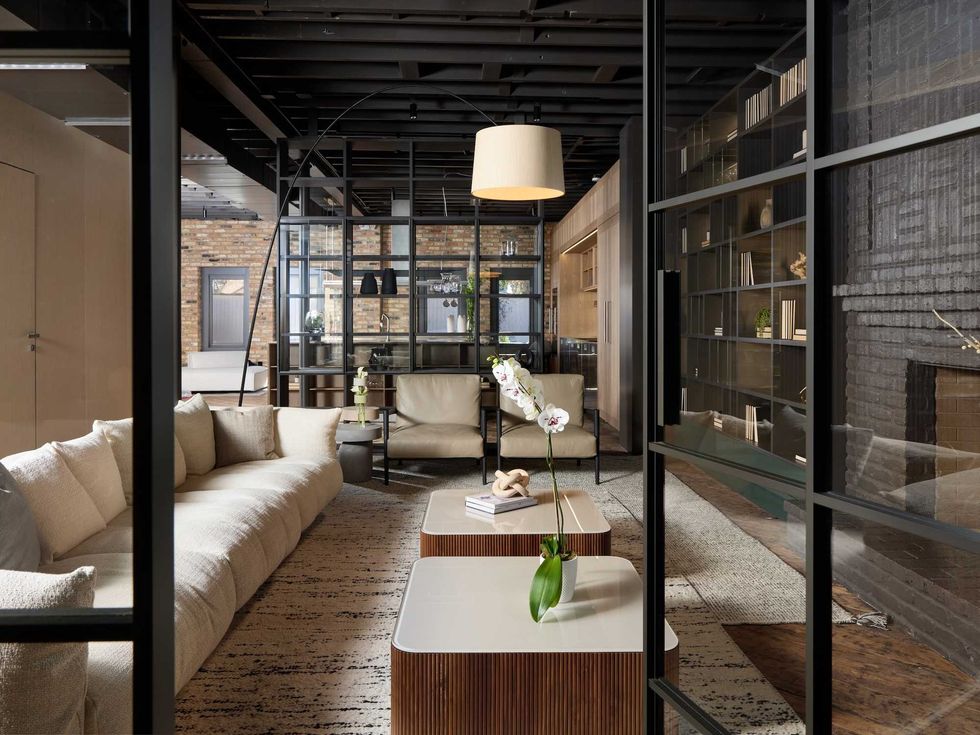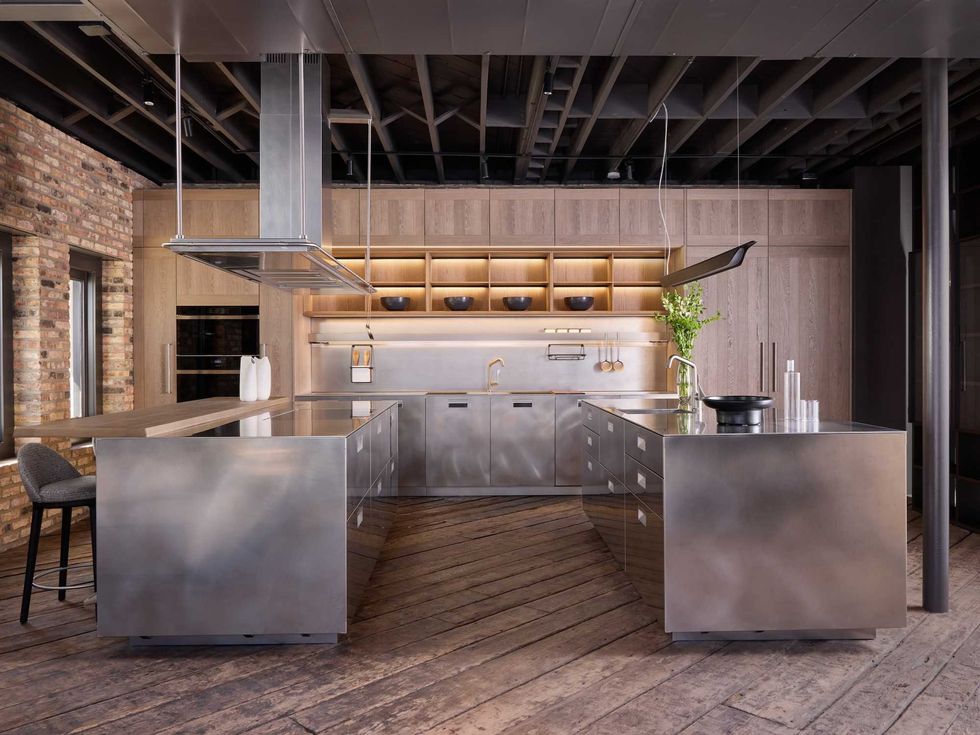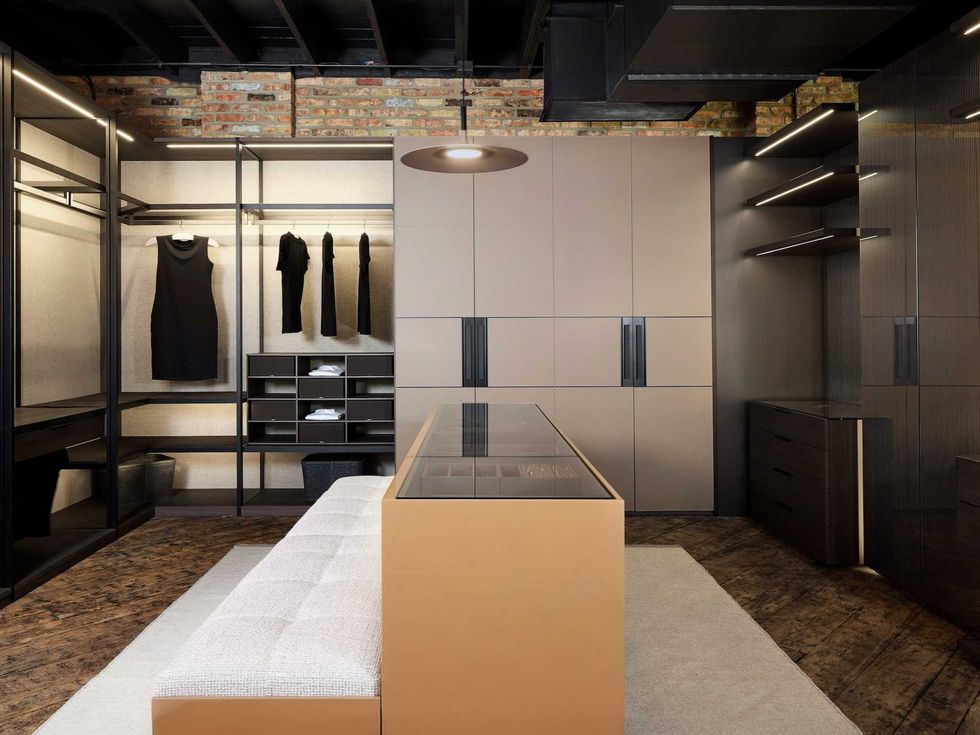Houston’s newest interior design showroom is a dazzling display of how historic preservation and swanky European design can slip into a harmonious dialogue that quietly dismisses the longstanding notion that contemporary furniture has no place within the oftentimes rigid constraints of a traditional home.
Tucked between The Upper Hand Salon and The Phoenix Pub in the historic Winlow Westheimer buildings, Armazem.design is a lifestyle design boutique carrying elevated European design and architectural solutions from century-old brands such as Arclinia, Lema, Barausse, Foscarini, Gaggeneau, and Sub-Zero Wolf.
The name Armazem pays homage to founder and principal Jon Fante’s Brazilian roots. Traditionally, armazems were community cornerstones — general stores where people not only shopped but also learned, connected, and built long-term relationships. Appropriate then, that Fante would choose to nestle himself between a salon and a pub, two businesses that are traditional archetypes for familiarity and community.
Armazem.design is set up like a bespoke home as opposed to a traditional contemporary design concept space. With everything from stately 1920s Victorians to cozy 1930s bungalows still in play in Montrose, setting up shop in a “Houston Browns” brick building from the 1930s — complete with original wide plank floors, exposed brick interior, and open rafter ceilings — allows clients to get a genuine feel for how the product lines work within the framework of these older homes.
Fante, who was born, raised, and educated as a civil engineer in Brazil, came to the States in 2006 to handle US operations for Florense. Fante retired from his position as CEO in 2017 to start Armazem.design in Chicago. The decision to expand to Houston is something that Fante says was a no-brainer, as Houston has been moving towards a more contemporary style overall.
“What we are trying to show here is that you don’t have to be in the extremes. You don’t have to be in the extremes of classic American design, which is beautiful, and what is also perceived here as European design, which is super contemporary, which is also beautiful,” Fante tells CultureMap. “There is a breadth of solutions in the inbetween.”
The buildout for Armazem.design takes clients on a journey through two kitchens, a living room, dining room, generously-appointed closet and dressing space, home office, and casual den space, all outfitted with wall units, complex storage solutions, and warm, comfortable furnishings. Formerly open spaces have been divided into distinct concepts using architectural partitions that can be designed for any space.
Every aspect of Armazem.design is custom made to order. The design may follow a more European school, but there are wooden elements and handmade objects that protect their environment from the contemporary curse of feeling cold, uninviting, or institutional. With lead times around three to four months, going bespoke here is as accessible as placing orders from mainstream retailers.
“While there is a focus on kitchens, there are a lot of different products that we bring,” says Fante. “We are a showroom that is focused on interior architectural applications for home. We have partners in doors, partitions, wall paneling, closets — there is a lot. We got this historical place in Montrose and we made it as a home. We want people to walk in and feel like they could live here. It’s very comprehensive.”
The owners of the building are currently working with the city to gain historical recognition, something that would mean a lot for the neighborhood, and to Fante.
“We were very lucky to find this space. We preserved every historical element in the showroom — you see these very rustic floors, these floors are almost 100 years old.” Fante discovered more of the historic “Houston Browns” brick during the renovation (the classic Houston brick has been out of production for decades), all hidden behind swathes of drywall. “We ripped that all out to expose the true character of the space,” Fante explains. “Of course we kept the brick.”
Fante shares that the decision to restore the building led to a phrase from an architect in their Chicago showroom that has remained their motto here in Montrose: “Let’s not bully the space, let’s respect it.” That’s a sentiment that the entire neighborhood can get behind.
Armazem.design is located at 1911 Westheimer Road and is open Monday through Friday from 9 am-5 pm.

 © 2010 Hester + Hardaway Photographers
© 2010 Hester + Hardaway Photographers Photo by Paul Hester/© 2010 Hester + Hardaway
Photo by Paul Hester/© 2010 Hester + Hardaway © 2010 Hester + Hardaway Photographers
© 2010 Hester + Hardaway Photographers © 2010 Hester + Hardaway Photographers
© 2010 Hester + Hardaway Photographers